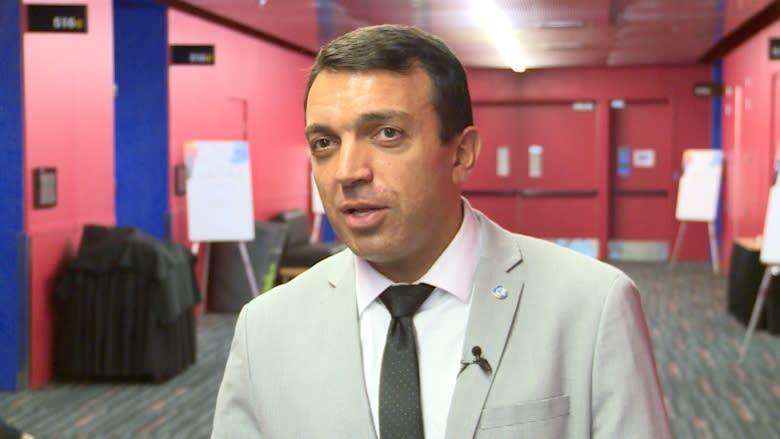Meet the interactive robot making a mark on Quebec's classrooms
While the NAO humanoid robot sounds much like a work of science fiction, the 58-centimetre machine is actually making a difference in some Quebec classrooms.
A researcher from the Université de Montréal has helped bring the NAO into four Quebec schools and hopes to see the project expand.
"Kids were so engaged, just because the robot was there," said Prof. Thierry Karsenti, who also holds a Canada Research Chair in information technology and education.
"They were coming to school on ped days. They were staying at school, after school, until 5 p.m."
Future engineers?
In this case, the purpose of the robot is to motivate students to learn, engage and become comfortable with interactive, programmable technology, Karsenti said.
"By the end of the school year, some of them wanted to be programmers, engineers, others wanted to create the video games. How they saw themselves in the future really evolved," he said.
"Why? Because they realized they had the power to control a robot."
The NAO, which has been in development since 2006, is described by its parent company SoftBank Robotics as a "teachers' ally."
Karsenti has shown students as young as eight years old at École primaire Paul-Jarry in Lachine how to program the NAO to sing, dance and even play soccer
The technology, however, comes with a hefty $6,000 price tag.
"I'm hoping in a few years from now, they'll be a lot cheaper," he said.
"But I think it's still a good thing to try in schools."
A powerful tool
Karsenti explained that beyond inspiring and challenging young minds, the NAO may be able to help students with autism excel in the classroom as well.
Another school involved in the project is the CFER de Bellechasse in Saint-Raphaël-de-Bellechasse, a school for children with special needs.
Karsenti said he's had a lot of success using NAO to interact with children on the autism spectrum disorder.
"Kids who never who never talk in class, who never look at their teacher in the eye.. they looked at the robot. They talked to the robot. They really empathize with the robot," said teacher Diana Osorio.
"I felt it was cute, immediately when I saw it. It's weird to feel that way when you see a machine. And I can see why kids, especially kids with autism feel attracted," she said.



